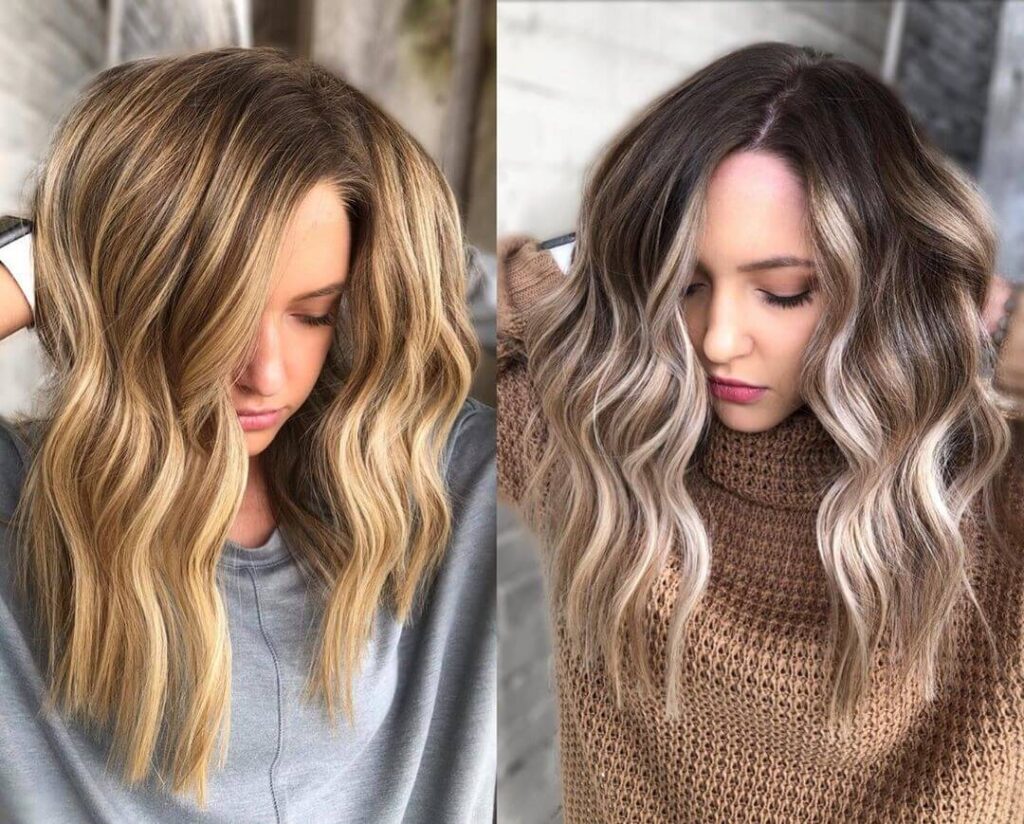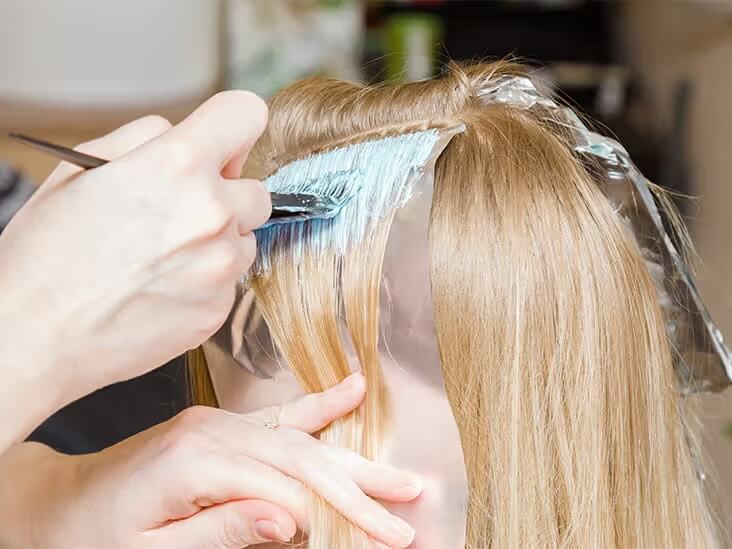We’ve all been there – that moment of anticipation as you apply a fresh coat of dye to your hair, only to be met with a less-than-desirable outcome. Whether it’s an unexpected hue, uneven color, or simply not the look you envisioned, hair dye mishaps can be disheartening. But fear not, for in the world of hair care, there exists a transformative solution: hair color correction. In this guide, we delve into the intricate art of hair color correction and explore how it can rectify even the most challenging dye mistakes from brassy tones to botched highlights.
I.What is Hair Color Correction?

Hair color correction is a specialized treatment aimed at fixing and enhancing the tone, shade, or overall color of the hair. But correcting or adjusting hair colors, especially those applied unevenly or pulling unwanted tones, can be a bit more complex than that. It may involve correcting uneven tones, addressing color mishaps, or even changing the color altogether. Even refreshing a color through the mid-lengths and ends can be classified as a color correction. Correcting color and tonal issues and creating a balanced, complementary color requires skill and expertise. The goal is to ultimately create a more harmonious overall color.
II. What are Common Color Hair Issues?
From bold brunettes to radiant redheads and platinum blondes, our hair color can speak volumes about our personality and style. However, maintaining that perfect hue isn’t always a walk in the park. In this section, we will delve into the common color hair issues that many of us face.

- Brassiness: Unwanted warm or orange tones in blonde or light-colored hair often lead to color correction services. This may develop due to improper color maintenance or exposure to elements (like the sun) over time.
- Uneven color: uneven color distribution may result in patches or streaks of color throughout the head.
- Color fading: Hair colors may fade unevenly, losing overall vibrancy and richness and causing an inconsistent effect.
- Overlapping hues: Overlapping dyes and layering multiple colors can lead to muddled and undesirable results.
- Color imbalance: Colors and undertones may appear darker or lighter than the intended effect due to various complications, leading to color correction.
- Overly dark tones: When transitioning from a darker shade to a lighter one, it can be quite difficult to remove the existing color, leading many to opt for a color correction.
- Regrowth mismatch (also known as “Hot Roots“): As the hair grows, there may be a noticeable contrast or line of demarcation between the natural hair growth and the desired overall color.
III. How Soon Can I Get My Hair Color Corrected?
You’ll likely go into damage control mode when a hair color session goes wrong. But though you want to fix the splotchy, brassy mess as quickly as possible, you may need to weather the storm for a few weeks to protect the health of your hair.

A professional stylist can help determine how much damage has been done and work with you to devise a plan to correct the color mishap. If the damage is minor, you may be able to fix it with a quick dye job that can be done immediately. But if your mane is dry and brittle from bleach damage, you might need multiple bleaching and toning sessions spread over several weeks to get the color right – after you’ve let your locks rest and recuperate for a couple of weeks.
IV. Hair Color Correction Techniques
1. Color Correction with Bleach
Your strands aren’t just one color. Many underlying red, yellow, and orange pigments combine to make your hair the color you see. And if you’ve ended up with an unflattering brassy or garish yellow after attempting to lighten your locks with bleach, chances are you didn’t leave the bleach in long enough to lift those unwanted pigments away.

After allowing your mane to recoup from the bleach for a week or so, you can attempt to lighten your hair further. But proceed with caution! Bleach strips your hair of essential proteins and nutrients, and repeated exposure can be very damaging, so give your hair enough time to recover from the first bleach session before trying again. An experienced stylist can help you retain healthy, lustrous hair while achieving the bombshell blonde you’re after. Use a restorative hair mask after bleaching again to help protect and restore your bleach-damaged mane.
2. Color Correction with Toner

Hair toner is used to adjust the shade of brassy tones, turning your locks a cooler blonde or light brown. The color toner you should choose depends on which brassy shade your bad bleach job has left you with. One form of hair toner is in shampoos and conditioners. If your hair has come out more yellow, you’ll need a purple toner or purple shampoo. If your mane is oranger than you were hoping, you’ll need a toner with blue shades like a blue shampoo.
3. Balayage/Highlights

To correct dark or uneven tones effectively, a skilled stylist employs various techniques tailored to the individual’s hair texture, color, and desired outcome. A stylist might use balayage or highlights to strategically introduce lighter shades throughout the canvas. By strategically placing these lighter tones, the stylist can effectively mitigate any stark contrasts and introduce a harmonious balance of color throughout the hair, enhancing its overall appearance and dimension.
4. Color Remover
Most major color-correcting sessions will begin with a professional color-stripping product to remove the existing color from the hair. This is the most gentle option for extracting the artificial dye and typically involves a hooded dryer to help activate the color stripper. It’s important to note that this will only lighten the hair to its natural color.
V. Conclusion
In conclusion, hair color correction is a vital process for rectifying dye mishaps and achieving the desired hair color safely and effectively. Whether it’s correcting uneven tones, brassy hues, or drastic color changes, seeking the expertise of a professional hair colorist is paramount. Attempting DIY fixes can often worsen the situation, leading to further damage and frustration. With their knowledge, skill, and access to high-quality products, a professional can assess your hair’s condition and formulate a tailored correction plan, ensuring optimal results while maintaining the health and integrity of your locks. So, if you find yourself facing a dye dilemma, don’t despair. Trust in the expertise of a professional colorist to restore your hair’s vibrancy and beauty, leaving you with the confidence to rock your desired look once again.


 BEST SELLING PRODUCTS
BEST SELLING PRODUCTS Wig Hair
Wig Hair WHOLESALE
WHOLESALE Contact us
Contact us Sale Events
Sale Events
